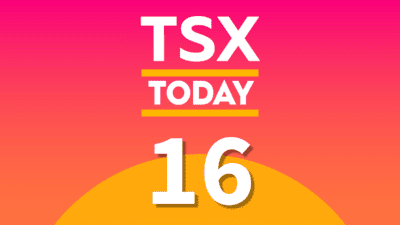Enbridge Inc (TSX: ENB)(NYSE: ENB), Canada’s largest midstream company, is fast emerging as one of my preferred long-term plays on the positive outlook for the patch. This is despite it being significantly different from my usual investments in the patch, which are predominantly undervalued small-cap players with tremendous upside.
Why do I like Enbridge so much?
Not only is it responsible for shipping 53% of Canada’s total crude exports to the U.S. via its pipeline network, but it has also managed to avoid the adverse publicity and political controversy that has embroiled TransCanada Corporation (TSX: TRP)(NYSE: TRP). This has left Enbridge with a dominant market position that continues to grow, reinforcing the company’s wide economic moat.
Just recently, the U.S. Federal Court approved the construction of Enbridge’s pipeline between Illinois and the West Texas Intermediate hub of Cushing, Oklahoma. This allows Enbridge to ensure delivery of Canadian crude to one of the most important markets in the U.S. and cements its position as the key provider of midstream services to players in the patch.
The recent U.S. decision comes on the back of the June decision from Ottawa to approve the Northern Gateway pipeline project, which is planned to have capacity for 723,000 barrels of crude daily. On completion, Enbridge will be able to ship crude and natural gas from the energy patch to Canada’s west coast, giving access to vital Pacific Rim refining markets.
Such a broad-based transportation and pipeline network allows Enbridge to effectively clip the ticket on just over half the barrels of crude shipped to the U.S., which is Canada’s largest export market for petroleum products. The completion of the Northern Gateway project will make it the pre-eminent transporter of Canadian crude to the west coast for transportation to vital Asian refining markets, reducing the patch’s dependence on the U.S.
This wide economic moat continues to reap rewards for Enbridge and its shareholders
The strength of Enbridge’s business model and the rewards it is reaping from its dominant position can be seen in the company’s second quarter results, where it reported adjusted earnings of $0.40 per share. This beat analysts’ consensus forecast for the quarter by 2.6%. Although it’s 33% lower than the previous quarter, it’s 5% higher than the comparable quarter in 2013.
Operating cash flow more than doubled quarter over quarter but slipped 13% year over year. However, Enbridge did finish the quarter with positive cash flow, with $399 million added to its cash and cash equivalents by the end of the period. This is an important achievement for a company operating in what is a capital-intensive industry, and underscores the strength of Enbridge’s business model.
Higher throughput on Enbridge’s liquid pipelines was a key driver of these better-than-expected results, and this was because of both higher oil sands production and crude being diverted from competing pipeline networks.
Its future outlook appears bright
One of the company’s key strengths is the breadth of its pipeline network, which makes it the dominant midstream player in the patch; with 16 pipeline projects currently under construction, it will maintain this position. The completion of these projects will significantly boost the capacity of its crude and natural gas transportation network.
The company has also obtained a re-export license from U.S. regulators allowing to re-export Canadian crude from the U.S., giving it greater access to European and Asian markets.
Furthermore, the future looks bright for Enbridge with Canada’s pipeline crunch and growing oil and natural gas production boding well for increased demand for pipeline capacity. Canadian crude production is forecast to grow at an average of 4% annually between now and 2030.
How good is Enbridge’s dividend?
An appealing aspect for investors is Enbridge’s regular quarterly dividend yielding 2.6%, which it has been consistently paying since 1953 — 61 years. This yield appears sustainable with a payout ratio of 93%. More importantly, though, the company continues to grow cash flow and earnings because of its dominant market position and wide economic moat.
Impressively, Enbridge’s dividend has consistently grown since inception with a compound annual growth rate of 10%, which is far higher than the average annual inflation rate for the same period. Furthermore, because of its wide economic moat and the growing demand for its transportation services, it is more than likely investors will benefit from further dividend hikes over time.
Enbridge is well positioned to continue growing, with strong demand for crude and natural gas expected to continue for the foreseeable future. When coupled with Enbridge’s dominant market position and its moves to expand its transportation network to access vital Asian markets, its future success is almost guaranteed.







